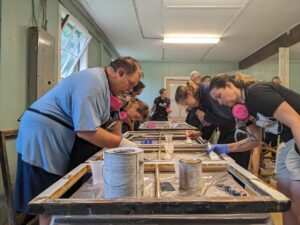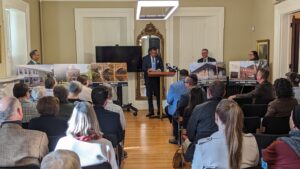
Five to Revive Spotlight: Mt. Hope Chapel
- July 13, 2023
- 1:01 pm
- July 13, 2023
- 1:01 pm
In a previous post, we announced our 2022-2023 Five to Revive. This annual list calls attention to five properties in our region in need of investment and preservation advocacy. In the Summer 2023 issue of Landmarks Magazine, we asked Chris Grooms, Friends of Mount Hope Cemetery Trustee, to share more about Mt. Hope Cemetery’s Old Chapel in the City of Rochester.
“A glance at the drawings and specifications is quite sufficient to assure us that we are to have something at Mt. Hope which will excel in everything, but outlay of money, anything of the kind in the United States,” so proudly proclaimed the Rochester Union Advertiser in June of 1861. Designed by the prolific architectural firm of Henry Searl & Son, construction of Mount Hope Cemetery’s Old Chapel and Receiving Vault was met with no small degree of excitement and anticipation. Completed in December 1862, the resulting Gothic Revival style structure was masterfully and charmingly realized; it remains an historically and architecturally significant symbol of the City of Rochester.
The vault extends thirty feet into the hillside behind the chapel. Four crypts on each side of a wide hall afforded temporary rest for those waiting on a spring thaw for interment. A corridor connects the vault to the chapel, wherein an exterior door has since been infilled.

The chapel boasted floor-to-ceiling walnut paneling, stained-glass windows, and was clad in Lockport limestone, with a slate shingle roof. In 1912, J. Foster Warner designed an extension on the chapel’s north side to accommodate Rochester’s first crematorium. Warner respectfully adhered to Searl & Son’s original stylistic program. The exterior’s cladding was matched, and architectural elements were replicated, reiterated, and maintained. For the interior, a wall with pocket doors, featuring stained-glass windows, provided a discrete and discreet separation of the crematory space from the main chapel space.
In 1974, the crematory had fallen out of compliance with environmental standards and ceased operation. Two years later, the windows and doors of the Old Chapel were boarded up by the City of Rochester. The building was mothballed, receiving no further attention until ten years later for roof repairs. While the chapel is still lovely to behold, a quick glance inside sets off alarm bells. The nearly 161-year-old structure is a victim of natural deterioration and the entropic decay of abandoned spaces. A thoughtful and urgent intervention is required if the Old Chapel and Receiving Vault is to survive.
The chapel’s original roof gutter drainage system utilized four internal downspouts. After more than a century’s use, these downspouts, made of lead, finally gave out, precipitating extensive water damage to the interior. In 1999, the spouts were replaced with insulated PVC piping with heat tracing for freeze prevention. The structure continues, however, to suffer interior water damage due to sporadic maintenance of heat traces, downspouts, and gutters. Fortunately, two original chandeliers and the interior stained-glass windows were rescued, removed, and stored.
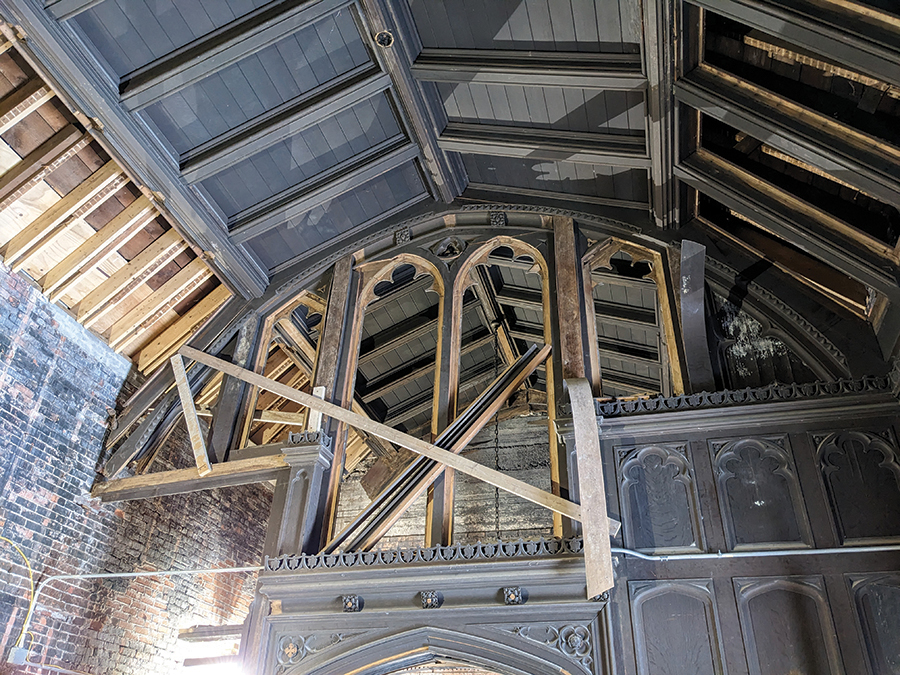
In 2016, a comprehensive condition survey of the structure, part of a Master Plan for the future of Mount Hope Cemetery, was conducted. The condition survey notes in detail several structural areas of concern that must be addressed prior to any renovation and restoration efforts. First steps necessarily include a vision for what the structure might be.
The Old Chapel is an excellent candidate for repurposing, offering myriad opportunities for community use. It has been noted that, when the interior space was intact, its acoustics were exceptional. Potential reuses of the chapel space could include: a music and performance venue, a gallery space for local artists, an interpretive center for both the Cemetery and Rochester history. Such a space might host presentations and seminars.
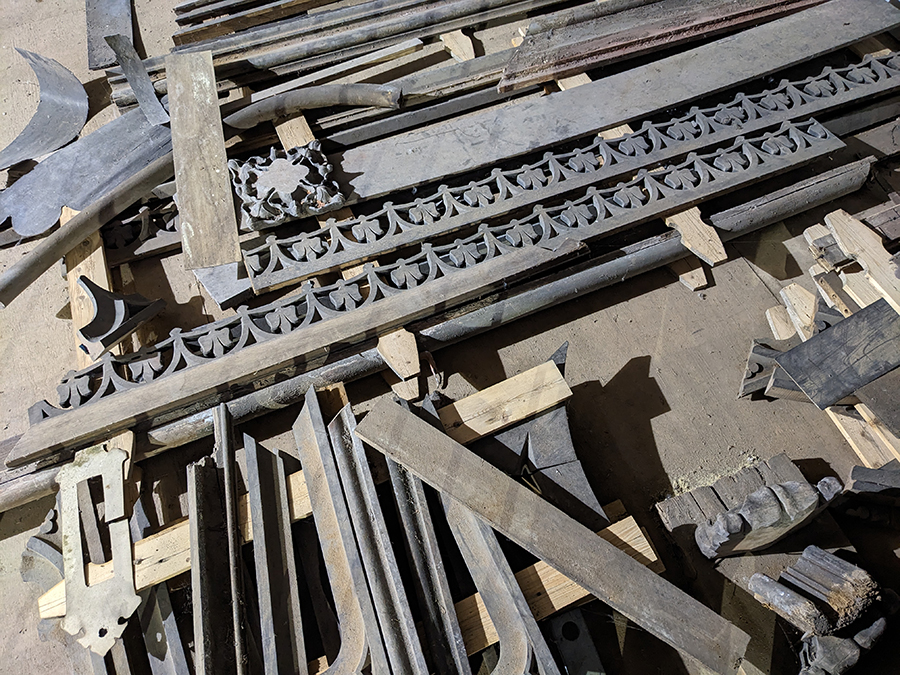
The cemetery essentially functions as a business, owned and operated by the City of Rochester. Conversion of the vault space into a columbarium would generate revenue which might, in turn, be reinvested in the cemetery. The city might also utilize a renovated chapel as a public rental space for private receptions, weddings, and other events.
Any number of imaginative and creative reuses might yield positive community impact and economic benefit, as well. Over the past five years, a renewed interest in the Old Chapel has spurred the Friends of Mount Hope Cemetery to engage the cemetery manager and other city officials in dialogue. Our great hope is that a dedicated and working partnership might breathe new life into the building. Such a partnership has proven successful in the past, bringing several major cemetery projects to fruitful completion. But time is of the essence. If we are going to save this iconic structure for future generations, we must act now.
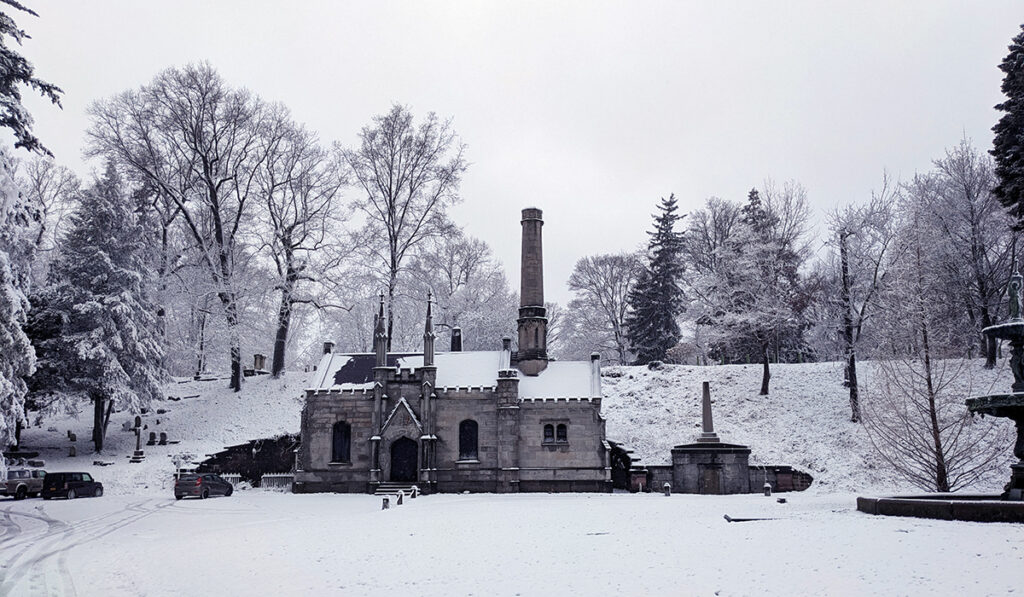
Chris Grooms is a Trustee with the Friends of Mount Hope Cemetery, a non-profit organization of volunteers founded in 1980 to restore, preserve, and encourage public use and enjoyment of this unique historical treasure. Learn more about the Friends at fomh.org.
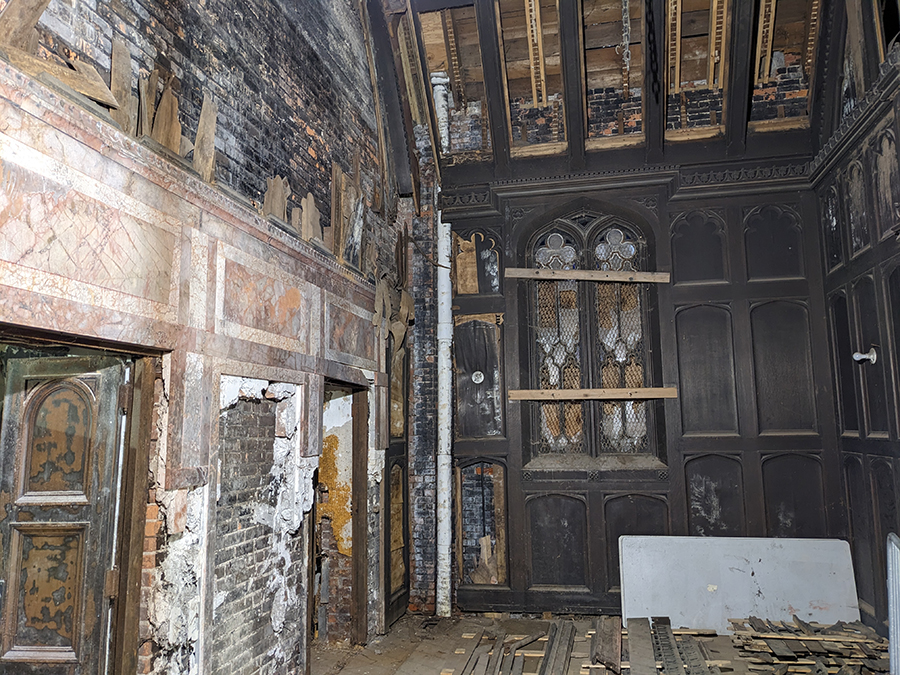
SHARE


